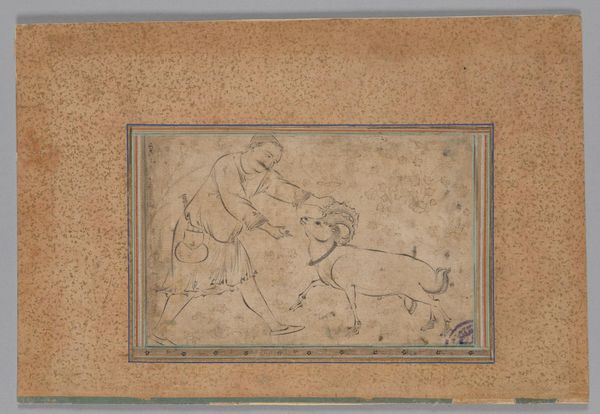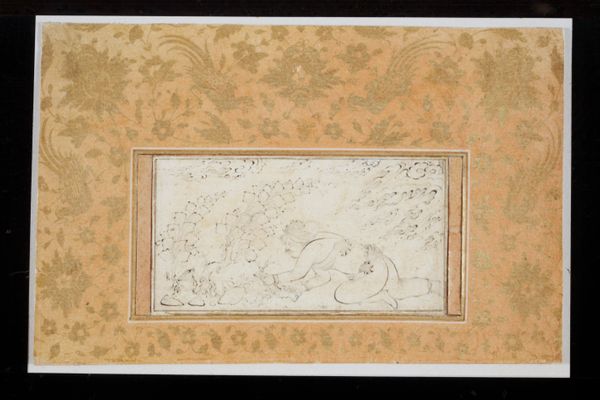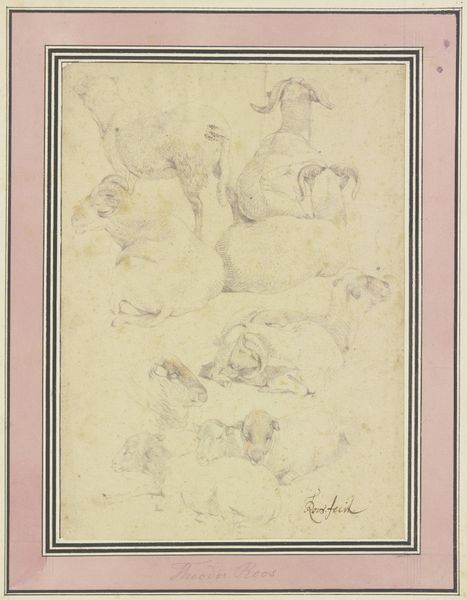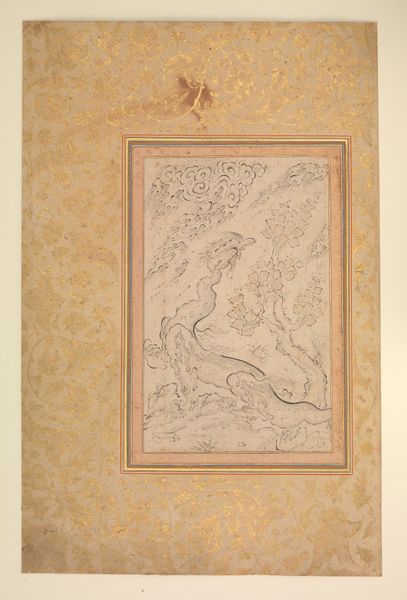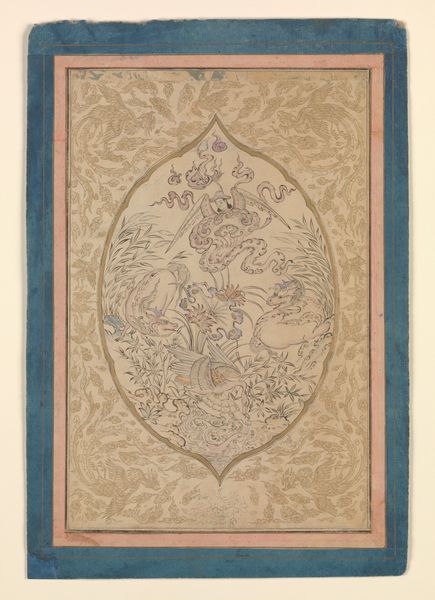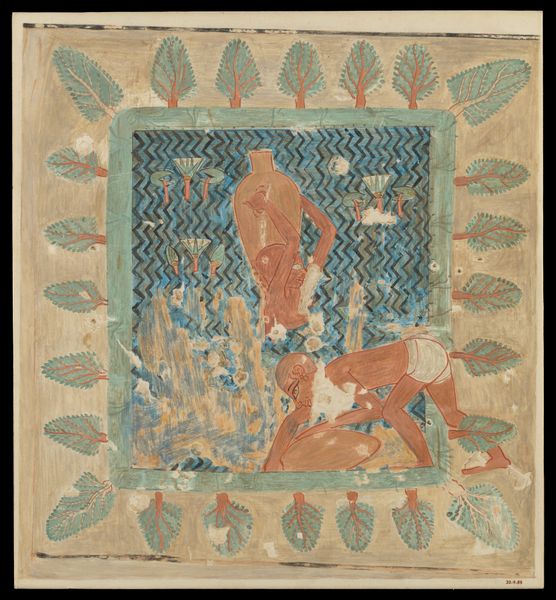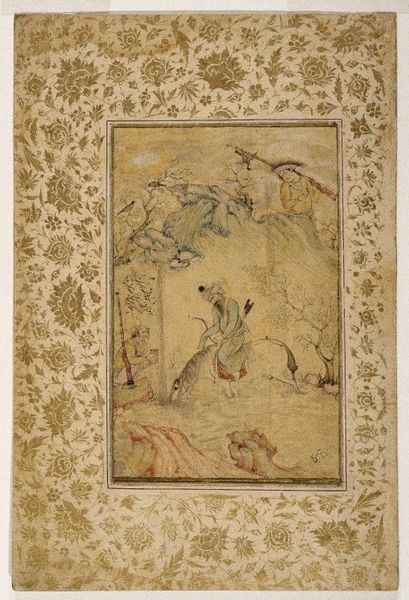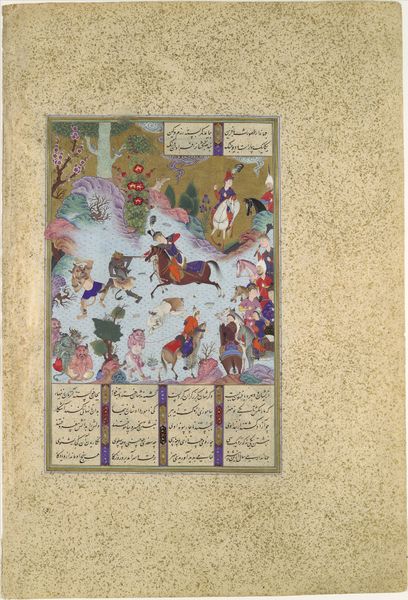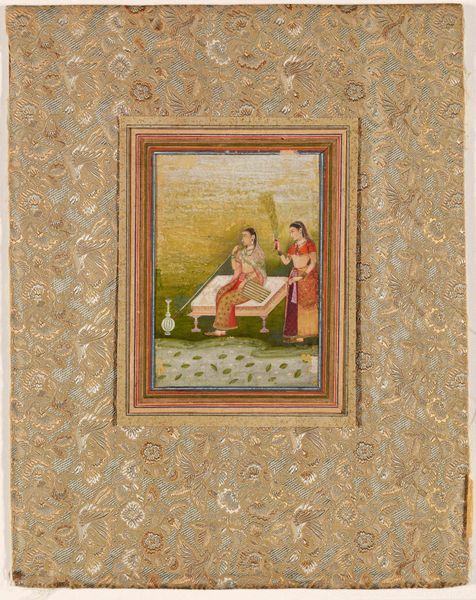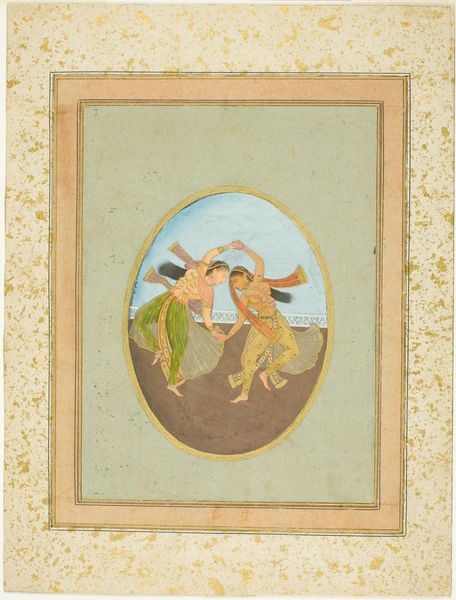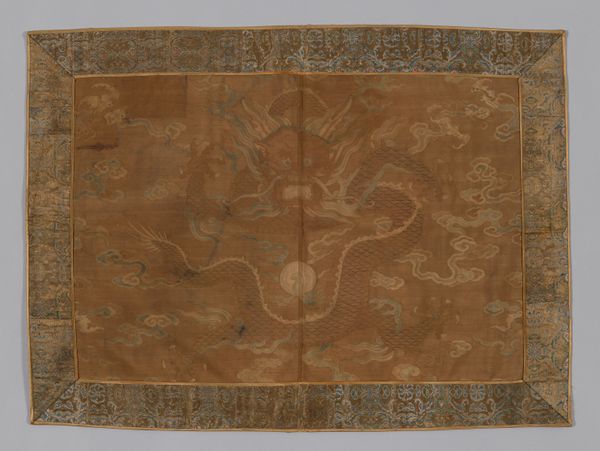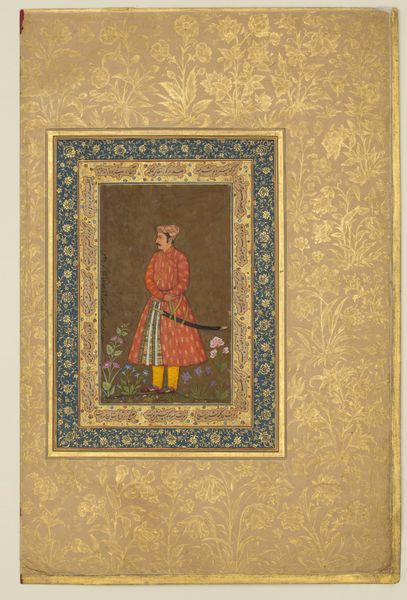
The Lion Tamer Safavid dynasty (1501–1722), early 17th century
0:00
0:00
drawing, paper, ink
#
drawing
#
asian-art
#
figuration
#
paper
#
ink
#
line
#
history-painting
Dimensions: Image: 13.8 × 19.6 cm (5 7/16 × 7 3/4 in.); Paper: 23.3 × 35.5 cm (9 3/16 × 14 in.)
Copyright: Public Domain
Curator: Welcome. We are looking at “The Lion Tamer,” a drawing from the early 17th century, during the Safavid dynasty in Persia, created by Sadiqi. It employs ink on paper, demonstrating fine lines that bring the scene to life. Editor: The muted tones create a feeling of ancient, almost faded power, yet there's raw strength in the depicted struggle between man and beast. Curator: That perceived power dynamic is quite relevant. Persian art of this era frequently featured representations of power and control. It speaks volumes about the societal structure and the idealised image of leadership during the Safavid period. We see here, arguably, a depiction of man's control over nature. Editor: And yet the labor inherent in that control is laid bare in the tension of the tamer’s stance, in the sheer physicality of the lion’s resistance. The starkness of the drawing itself draws attention to the basic materials - paper, ink - and to the skilled hand which creates a dynamic conflict, which has political and cultural meanings. Curator: Absolutely, the medium contributes to our understanding. Line drawing, particularly in Persian art, highlights a cultivated skill but also symbolizes precision in execution and governance, concepts integral to Safavid ideology. Editor: I find myself focusing on the lack of color. It simplifies the struggle to its core elements: strength, control, resistance. It reminds me of workshop drawings, maybe a template that would have had more colour, pattern, labour invested, or could this also been presented to someone who appreciated minimalism as we know it? Curator: It also leads us to contemplate the construction of masculinity within that era. Is it subverting or reinforcing ideals linked to control and domination? It depends if we are discussing the elite audiences, their interpretation is one aspect, however others will find other meaning to its simplicity. Editor: Right, we’re left with this image not as a final product, but a step along a production line that invites discussion on art as work, as skill, as power and its representations through basic elements. Curator: Yes, and considering the historical narratives woven into such art offers crucial insights into social and political landscapes of the past and their continued influence in shaping cultural understandings of identity, domination, and representation today. Editor: By recognizing both the art historical context and the raw materials, we have a clearer view of this historical struggle.
Comments
No comments
Be the first to comment and join the conversation on the ultimate creative platform.
